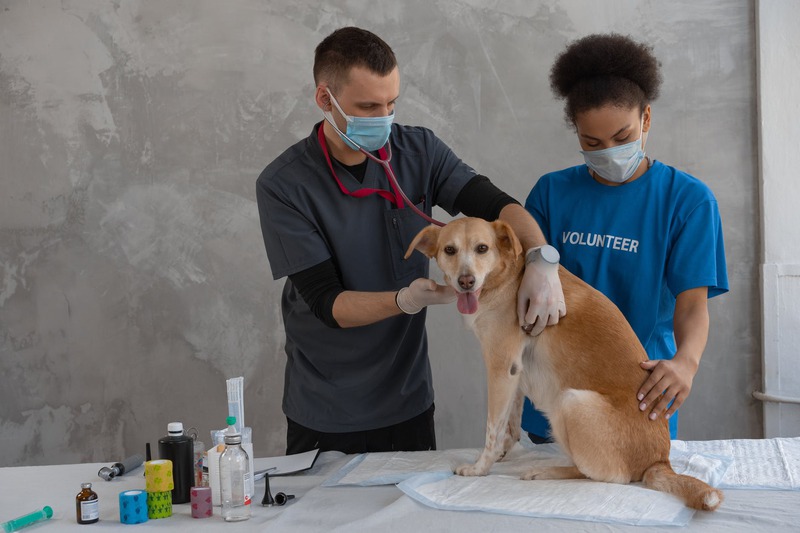Imagine a cozy evening on the couch with your furry friend by your side. You’re petting them, and suddenly, you feel a small bump. Your heart sinks as you realize it’s not just any bump – it’s a flea. Not only is this an annoying pest to deal with, but it can also lead to serious health issues for your pet.
This is where the timely start of flea and tick prevention can be a game-changer. Let’s talk about when you should gear up to protect your beloved animals from these pesky intruders.
The Timeline for Prevention
Before we delve into the timing, it’s crucial to know a bit about the enemy. Fleas and ticks are not just summer problems. They can survive and even thrive in many environments throughout the year. So, when should we start taking action against them?
The Role of Climate in Flea and Tick Activity
Generally, flea and tick prevention should become a routine as soon as the weather starts warming up. These critters love temperatures that are moderately warm and consistent, typically around 65-80 degrees Fahrenheit.
That said, with climate variations and indoor heating, fleas can often be a year-round concern. Ticks are slightly more temperature-sensitive but can still pose a threat outside of the traditional spring and summer months.
Spring into Action
Spring marks the beginning of peak flea and tick season. This is when you want to be fully prepared. However, if you live in a region with a milder climate, then it’s recommended to keep flea and tick prevention on your radar all year round.
It’s also important to note the role of veterinary diagnostics. These can be helpful in identifying any potential flea or tick issues that your pet might already have, even before the peak season. A reliable veterinary diagnostic lab can perform a variety of tests to confirm if your pet is currently affected and advise on the best treatment options.
Monthly Treatments and Consistency
To stay on the safe side, monthly treatments are often recommended. The regularity can depend on the specific product you’re using and your vet’s advice. It’s important to remain consistent with your prevention schedule to ensure the best protection for your pet.
Types of Flea and Tick Prevention
There are numerous options for flea and tick prevention, and deciding which one to use can be overwhelming. Here are a few common choices:
-
Topical Treatments: These are applied directly to the skin of your pet and are effective for about a month.
-
Oral Medications: Pills or chews are given to your pet to kill fleas and ticks from the inside out.
-
Collars: Specialized collars that release chemicals gradually to repel or kill pests.
-
Shampoos and Dips: Medicated washes that can sometimes offer immediate kill rates.
-
Sprays: Effective for both your pet and their environment to kill and prevent pests.
By understanding your pet’s needs and lifestyle, as well as the local prevalence of fleas and ticks, we can choose the most suitable method for our furry friends.
Understanding the Risks
Flea and tick infestations are not just uncomfortable – they can lead to severe health issues. Fleas can cause allergies, dermatitis, and even tapeworms, while ticks are well-known carriers of diseases like Lyme and Rocky Mountain spotted fever. Prevention is crucial not just for comfort but for health.
Why Prevention is Preferable to Treatment
We know the saying – an ounce of prevention is worth a pound of cure. This couldn’t be truer when it comes to flea and tick control. Once an infestation takes hold, it can be difficult and time-consuming to eradicate, not to mention the discomfort and risk to your pet’s health.
Your Pet’s Vaccination and Parasite Prevention
Talking about prevention, let’s not forget about dog vaccinations in Merced, CA. Vaccinations play a significant role in protecting our pets against various diseases, which are just as important as protecting them from parasites like fleas and ticks. With comprehensive pet vaccinations and parasite prevention plans in place, we can keep our furry family members safe and sound.
Integrating Flea and Tick Prevention with Regular Veterinary Care
Effective flea and tick prevention ties into overall pet health care. We should always include regular check-ups with our trusted veterinarians in Merced, CA. These professionals can provide invaluable insights into the specific needs of our pets and can recommend tailored prevention protocols that take into consideration the local environment and lifestyle factors.
Partnering with the right pet hospital ensures that we are up to date not only with flea and tick prevention but also with all other aspects of our pets’ well-being.
Additional Tips for Flea and Tick Prevention
While choosing the right products and strategies is essential, there are more things we can do to keep our pets safe:
-
Keep your yard trimmed and remove leaf litter where ticks may hide.
-
Regularly wash your pet’s bedding and vacuum your home to rid it of potential pests.
-
Inspect your pet for fleas and ticks after outings, especially if they’ve been in wooded or grassy areas.
-
Ensure that all of your pets are treated for fleas and ticks, not just the ones going outdoors.
Fleas and ticks can hitch a ride on one pet and spread to others and throughout your home. Keeping everyone treated is vital for full household protection.
Wrapping Up
Determining when to start flea and tick prevention largely depends on where you live and your pet’s lifestyle. Remember, while the warm months are the most critical times, our fight against these pests should be consistent year-round. We’ve covered the importance of timely prevention, the types of products available, the grave risks associated with infestations, and integrating preventive care with routine veterinary services.
Collectively, these measures ensure that you and your furry friends can enjoy every season with peace of mind. By being proactive and conscientious with flea and tick prevention, we can avoid those unwanted bumps and keep our pets healthy and happy.





